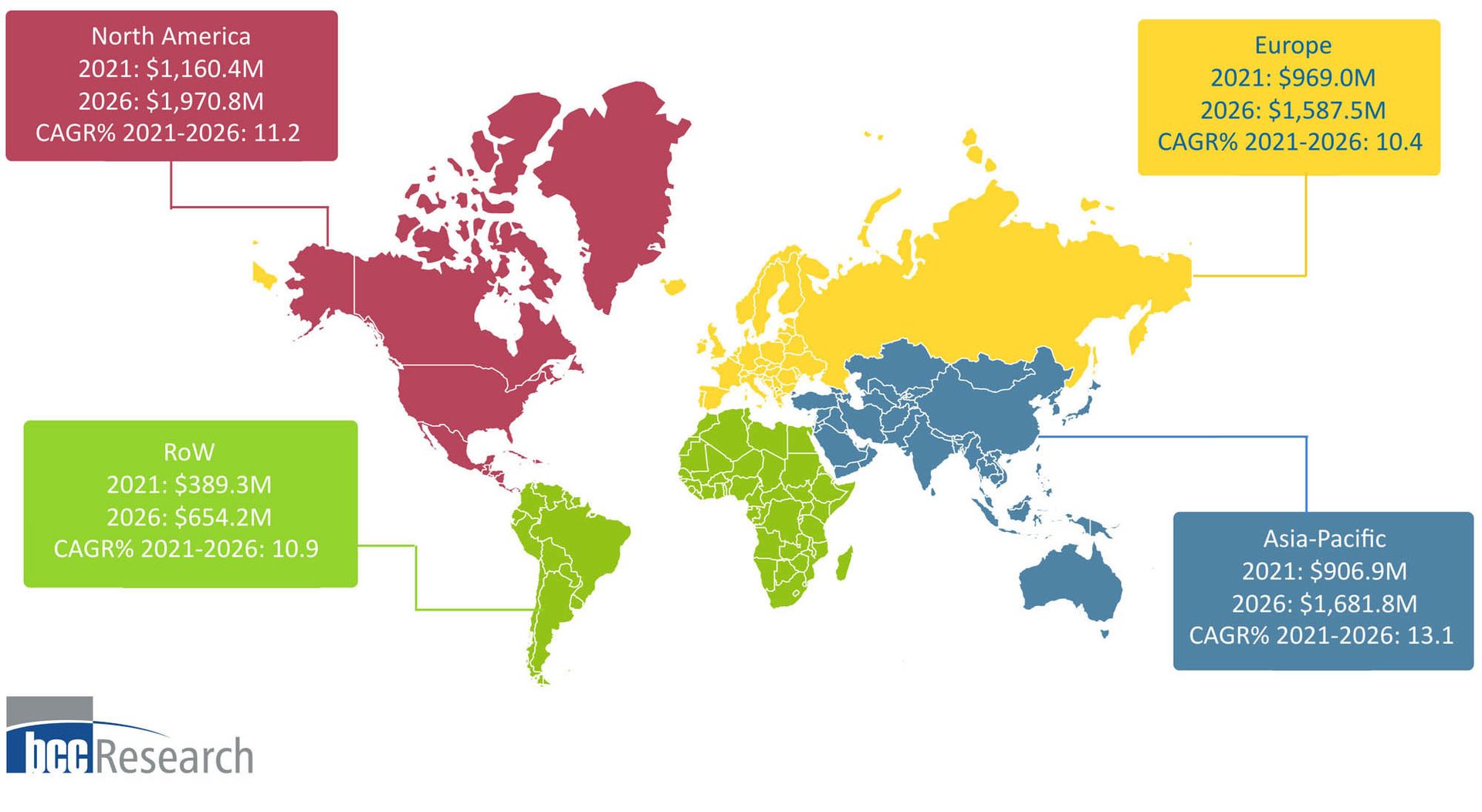Ready to proof — CLJ 6/7/22
KJ proofed on 6/14 and sent corrections to Clare
Revised on 6/14
Ready for author
TARGET THE MARKET
A regular column featuring excerpts from BCC Research reports on industry sectors involving the paint and coatings industry.
The Global Antimicrobial Coatings Market
Video: Fritz Jorgensen, Creatas Video+/Getty Images Plus, via Getty Images
By Vicki Hayward, Senior Content, PR, Partnership and Events Specialist, BCC Research, Newcastle Upon Tyne, United Kingdom
The global market for antimicrobial coatings should reach $5.9 billion by 2026 at a compound annual growth rate (CAGR) of 11%.
As has been seen across a wide variety of other industries, COVID-19 reduced global paint and coatings market sales volumes to $167.6 billion in 2020, down 3% from the previous year. Due to the pandemic prompting international lockdowns throughout much of 2020 and even 2021, this has impacted production and shipping conditions, resulting in an uneven global performance and a significant shift in the segment market.
Despite this, demand for antiviral and antimicrobial coatings has soared, as growing concerns regarding hygiene and cleanliness rise throughout many industries. The antimicrobial coatings market has traditionally faced challenges in gaining widespread adoption, due to the difficulty in measuring their influence on human health. However, the pandemic has brought them to the forefront as a critical safety measure. Demand for these coatings is now projected to be at least twice as high as it was before the outbreak. As a result, key companies in the worldwide paint and coatings market have increased their antiviral and antimicrobial coating manufacturing research and development activities to reflect this demand.
Most notably, but perhaps not surprisingly, the demand for antimicrobial coatings in medical devices has also increased. This application category is predicted to develop faster than sanitary facilities in kitchens, as well as air conditioning and ventilation systems. Largely due to the number of hospital-acquired infections (HAIs) rising, but also because antimicrobial coatings are preferred by doctors, given that antimicrobial coatings are more helpful in preventing germs from spreading than powerful cleaning chemicals or disinfectants. In North America, government authorities and healthcare institutions are driving the U.S market, due to increasing concerns about reducing HAIs That being said, while demand is high, rigorous regulations in the European Union and United States are expected to stifle global demand.
BCC Research published a comprehensive report covering the global antimicrobial coatings market. Here, we share a few highlights from the report.
Market Breakdown by Country
North America has the largest market share, coupled with highest demand for antimicrobial coatings (Figure 1). This is understandable, as the U.S. spends the most on healthcare — almost $3 trillion annually compared to other countries.

FIGURES 1 ǀ Global antimicrobial coatings market.
The pandemic has served as a catalyst for antimicrobial research and funding, with start ups developing antimicrobial coatings for use in textiles, while other major manufacturers explore methods to incorporate coatings into products such as consumer and commercial vehicles.
However, not all antimicrobial coatings are made equal. Metallic antimicrobial compounds like silver and copper can kill bacteria and viruses, but dispersing them in coating matrices can be difficult. Photocatalytic, enzyme-based and bio-based coatings have also been demonstrated to be effective. In fact, photocatalytic coatings that are activated by light are becoming more popular due to their self-cleaning capabilities and viral resistance.
Market Breakdown by Application
Antimicrobial coatings are bacteria-resistant coatings used on doors, glass panels, walls, doors, HVAC tents and counters — among other things. Furthermore, masks, gloves, fabrics and carpeting are all treated with antimicrobial coatings.
In the construction of public buildings, walls, doorknobs and countertops need to be covered in an antimicrobial coating. This, coupled with the rigorous need to decrease the danger of contact contamination across the construction industry, is projected to encourage the use of antimicrobial coatings, thus increasing demand across construction.
What’s more, increasing parental concerns and a growing demand for secure school environments are also expected to drive up demand for antimicrobial coatings. Because these coatings are harmless and do not leave a harmful residue, they are ideal to use on classroom and corridor walls, as well as handrails.
In fact, antimicrobial coatings are expected to see a rise in demand from most industries, including the medical/dental, food and catering, self-service technology, public transport, public locker rooms/toilets and telecommunications, as all have immediate requirement for these coatings.
Antimicrobial coatings are fast becoming essential components of infection-control practices in various aspects of public and private life, resulting in the steady and continued increase in demand across all sectors.
All Paint & Coatings Industry Magazine readers are entitled to a 20% discount on the purchase of a BCC research report. Simply provide a link to this article with your order, and the 20% discount will be applied to the final invoice. Visit BCC Research: Market Research Reports & Industry Analysis for a comprehensive listing of over 20,000 available and planned reports that will help you make informed business decisions. For more information, please contact Dr. Helia Jalili at helia.jalili@bccresearch.com.